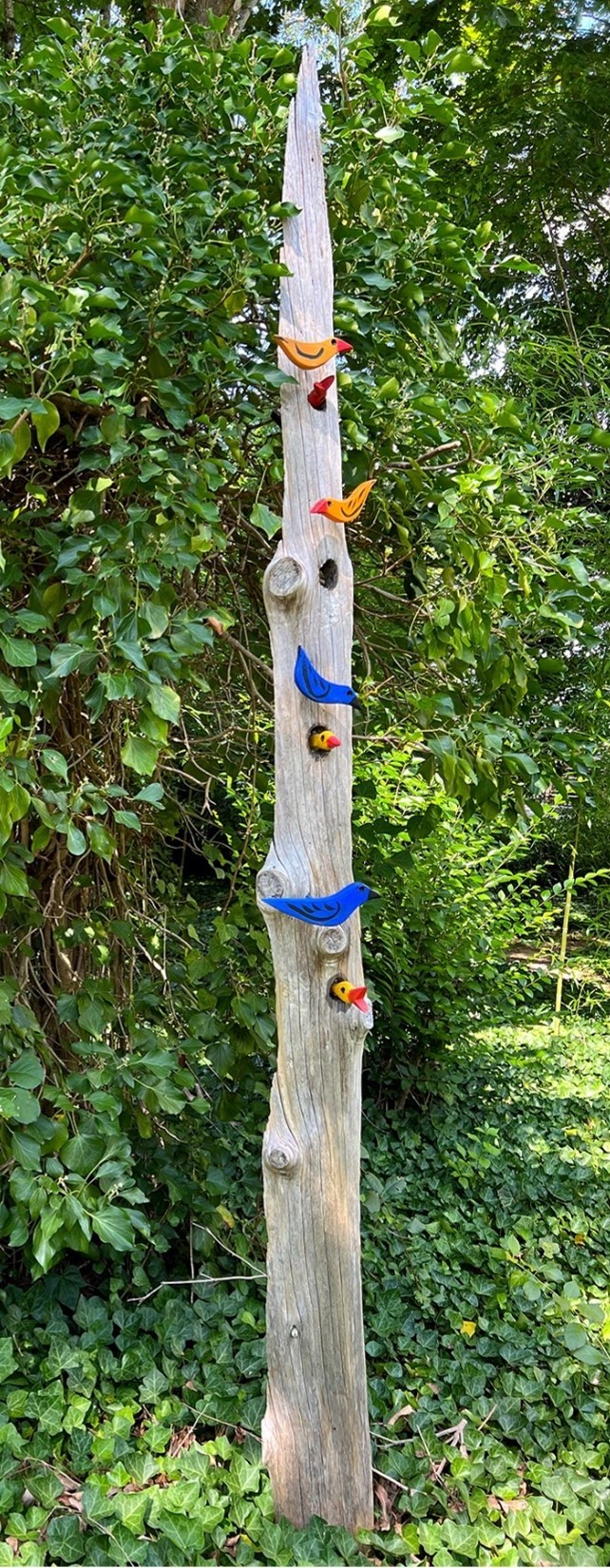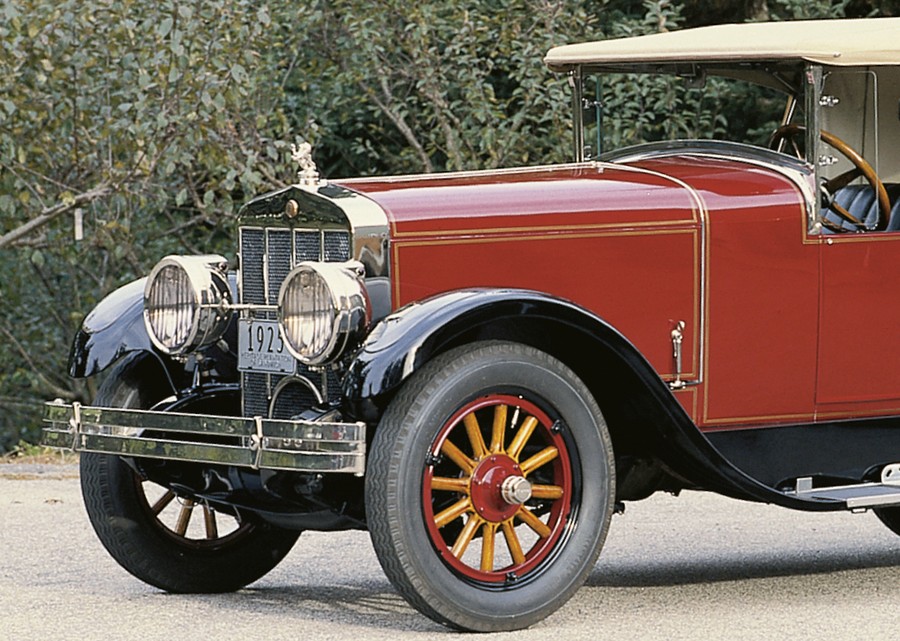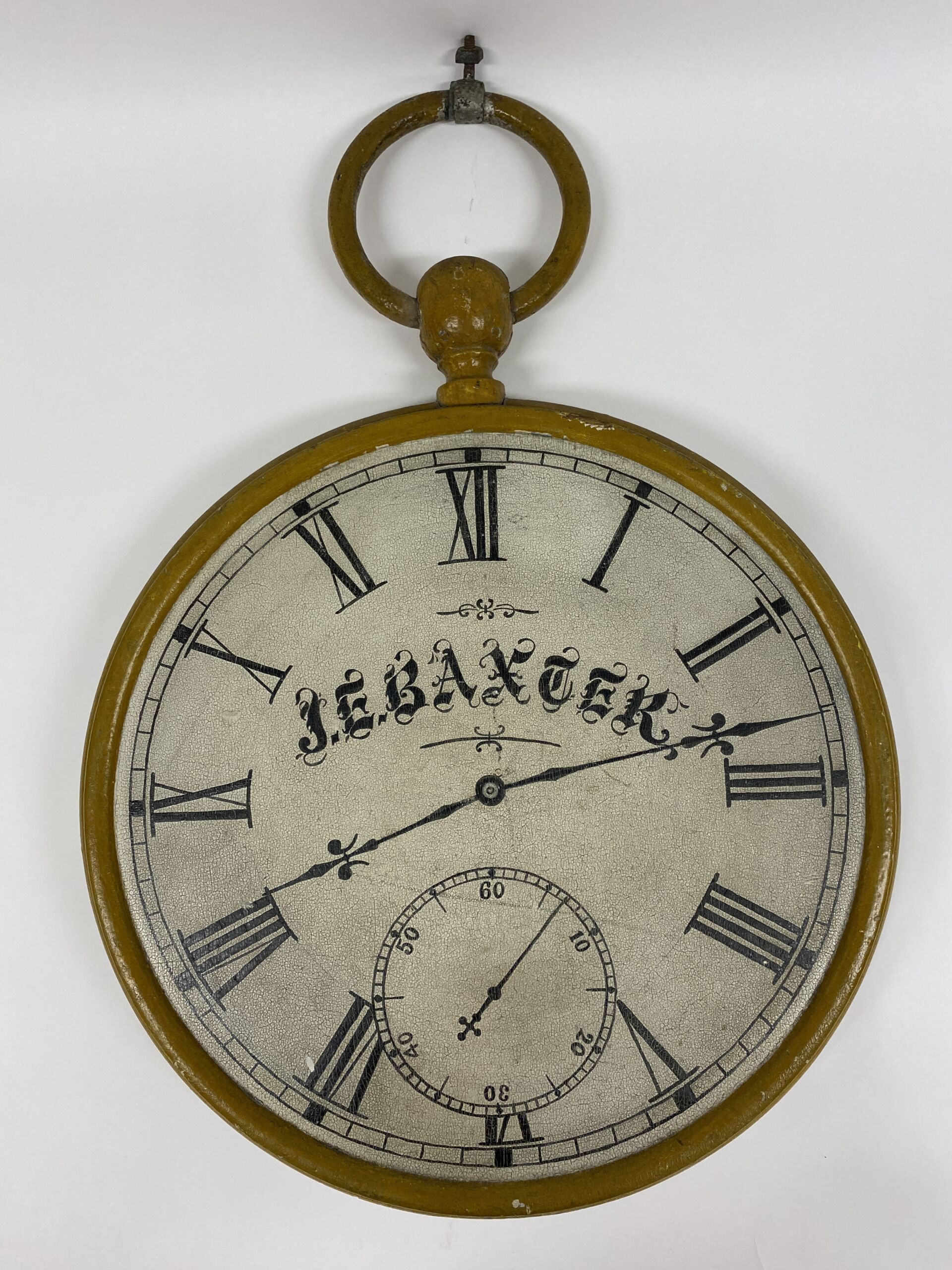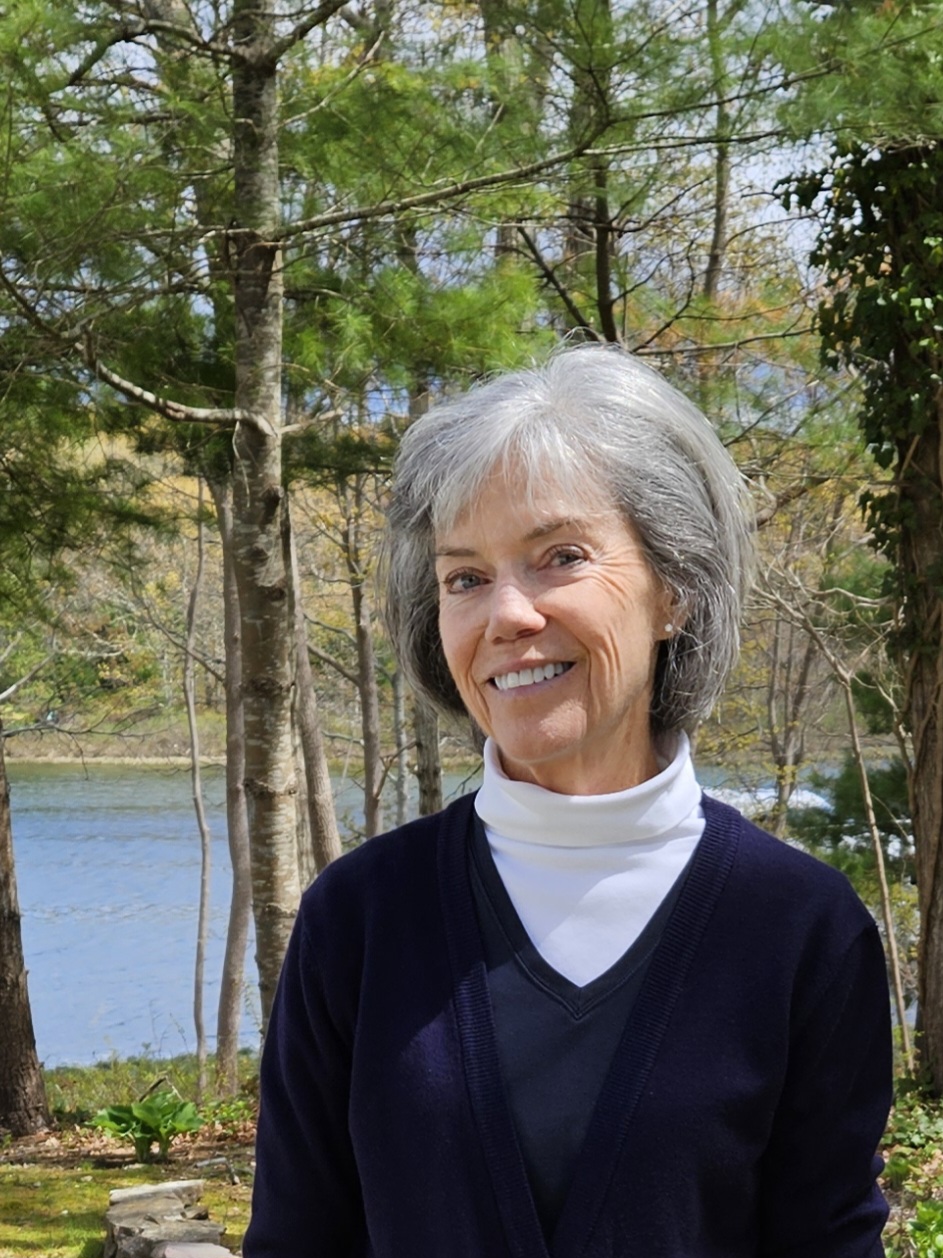Alfred Glover in the Garden: An Interview with Alfred Glover
By Amanda Wastrom, Curator
This season, we are thrilled to have Alfred Glover’s whimsical, folk-art style sculptures populating the grounds and gardens at Heritage. For over four decades, Glover has lived and worked on Cape Cod, making art in wood and salvaged aluminum. He trained at the Vesper George School of Art in Boston and under Henry Hensche in Provincetown in the 1970s. His work is displayed along the East Coast, most notably at Cape Cod Museum of Art, Cahoon Museum of American Art, Highfield Hall & Gardens, Mass Audubon Long Pasture Wildlife Sanctuary, Boston Children’s Hospital, Falmouth Hospital, and Cape Cod Hospital.
Opening on May 17, 2024, the exhibition, titled “Alfred Glover in the Garden” is one of Glover’s largest exhibitions to date. He created several new works specially for the exhibition. Curator Amanda Wastrom chatted with Alfie about his background, how he became a sculptor and what keeps him inspired.
Can you tell me a little bit about your childhood and growing up?
When I was little, we lived in Rockport, Massachusetts. The property that we owned was called the Old Harbor. We lived on a wharf in a little house. My friend and I would go down a ladder to the harbor and catch horseshoe crabs and we would race them. Horseshoe crab racing was kind of slow but we had a lot of fun!
I still have wonderful memories of Bearskin Neck in Rockport. It’s a stretch of land that reaches out into the ocean and it’s mostly old fishing shanties and shacks. They’re all turned into one kind of shop or another: lobster shops, candy shops and a lot of small artist studios. Today, I’m glad to see that Bearskin Neck has come full circle and is being occupied with younger artists and galleries.
Were you interested in art as a child?
Most of my parents’ friends were artists. We moved to Newton and I had a space in the basement and I had a lot of scrap wood and I would do pretty much what I’m doing now! Carving birds and making totems. I remember a neighbor coming by and she liked the animals I was making. She said, “I bet you could do that when you’re all grown up!” And I thought “How absurd that someone would do this as a living!” Yet, she was correct and here I am all these years later.
How did you get to art school?
In high school, I didn’t know which way to go but I was able to take an art class. My art teacher was wonderful and became a friend for many years. He had an extra room in the school and he let me take that over as my studio. After that I went to the Vesper George School of Art in Boston. It was on St. Botolph Street in Boston, which was a busy area for artists. It was mostly a commercial art school, but there was some fine art too. Robert Douglas Hunter was one of my teachers. He would bring us to the MFA Boston to copy paintings by Van Gogh and Matisse. We would also paint outdoors in the Fenway. That was wonderful. After that, I went to study in Provincetown with Henry Hensche along with some other friends from Vesper George.
Tell me about living in Provincetown in the early 1970s. What was that like?
I moved from Newton to the Cape in 1973. My father and I converted an old school bus and I had it in a campground that was close by. It was terrific. I could pack my easel on my bike and travel to the studio on Pearl Street. I had a friend, Susan Day, and she had a converted mail truck. We would spend the day painting with Henry Hensche. I was there initially for three years. I kept going back every couple years and I’d bring a new artist friend to introduce to Henry. He became a very good friend.
What was it like studying under Henry Hensche?
Henry’s painting was all about color. Basically, for his students, he would prefer a kindergartener as opposed to someone who thought they knew something. He wanted to start from the beginning. He would set up pots and pans and objects in the sun. We would do that all day because every twenty minutes, the light would change and the colors would change. He also wouldn’t allow us to use brushes. We had to use palette knives. We were not trying to make paintings–these were color studies.
Sometimes we would go down to the beach to paint “mudheads.” That was one of the things that Charles Hawthorne liked to do. He would set up a model against the sand and the sky. You would get the practice of seeing the outside shape and since you couldn’t make out any features, you were looking just at the colors and the forms. You were mixing colors right on the board. They were really fun because you can actually get a likeness that way!
Now, with the internet, I’m in touch with a group of people from that time and people who follow Henry’s teaching. The Cape School is still going. It’s not in the same barn and it has changed but there is a whole group of artists who still follow that school of painting and it is very active!
How has that training affected your work now?
A lot of it has to do with seeing things in a simplified way. When we were out painting landscape scenes with a little house or something, we wouldn’t bother painting the windows. We weren’t concerned with the small details, we were more concerned with the big shapes. That is, in a way, what I do now.
I am interested in fauve painters like Henri Matisse and André Derain. I’m drawn to that. So more and more in my work, I’m trying to paint like a fauve painter! Which is not too different from what Henry Hensche was doing because he was using exaggerated colors.
 How did you evolve from painting to sculpture?
How did you evolve from painting to sculpture?
When I came to the Cape, I was painting and I was just starting to show here and there. And then I started combing the beaches–you know, just for the fun of it. And I started to bring back old boards and wood. People were starting to get interested in folk art and someone brought me a book. I started making bird shapes out of the wood. I left them very simple. Unpainted. They were very popular. I had a number of galleries that wanted to have those. So that work took the place of my painting. It evolved and developed into making all these different animals. I didn’t set out to make folk art but it is back to what I was doing as a kid.
Tell me about your recent work in metal?
A few years ago, I started making the birds and shapes in aluminum and I found that it was very easy because aluminum is very soft. I got a little welder and started putting things together. So they are still very simple shapes that I paint. I usually get old fuel tanks from boats–big ones! Three feet by six feet, and that’s what I use for my materials. So, similar to the way I make the wood pieces, I weld different shapes together and I have a lot of fun painting them!

Anything else you’d like to share about your work?
All of my animals are friendly and they all get along! None of them are threatening. I don’t like to have anything troublesome or mean-looking. I like friendly animals. I just like to be peaceful. I don’t like to think about animals eating each other. When I look out the back window, that’s pretty much what I see. All the birds and rabbits and squirrels–they’re all pretty non-violent and I like it that way. I like to think about how the animals I make are having a conversation with each other.
Come see Alfred Glover’s work at Heritage, on view in the gardens from Friday May 17, 2024 to October 20, 2024. For more on Glover’s work, visit his website.









